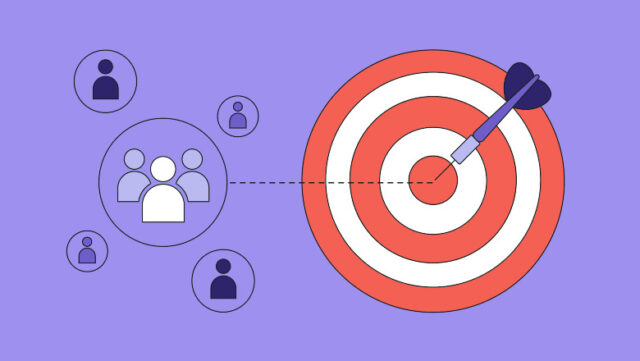
It is becoming increasingly difficult for new and aspiring businesses to grow in an otherwise monopolized market. Developing a workable target market strategy can be a way for any business to succeed in a competitive marketplace. By understanding and effectively reaching out to the right customer segments, any company can tailor their products and services to meet specific needs.
In this comprehensive guide, we will provide a step-by-step approach to help businesses develop a workable target market strategy. This will include conducting market research to identify customer segments as well as writing persuasive marketing messages. By the end of this guide, you will be equipped with the necessary tools to engage effectively with your target audience.
1: Conduct Market Research

The first step in developing any sort of market strategy is to conduct thorough market research. This involves gathering data and insights about the industry as well as any competitors you may have and potential customers you want to gain. During this stage, here are some key factors to keep in mind:
Industry Analysis
Analyze the industry you are a part of. You will want to know how big it is, along with any major competitors and trends. Understand the current and future opportunities that may impact your target market strategy.
Competitor Analysis
Once you have identified your competitors, you must analyze them as well as have a good outlook on their offerings and pricing strategies. This analysis will help you differentiate your business and understand your competitive advantage as well as how your competitors operate.
Customer Analysis
Determine your ideal customer profile. You can do so by studying demographics, buying behaviors, and various customer preferences. Utilize tools like surveys and interviews to gather insights directly from potential customers.
2: Identify Target Customer Segments
Now that you have gathered sufficient market research data, it is time to identify your target customer segments. By segmenting the market, you can focus your resources on the most promising customer groups. This section will involve the following steps:
Demographic Segmentation
You should divide your target market based on demographic factors. This includes age, gender, and income, to name a few. With this information, you can tailor marketing messages and product features to specific groups as well as learn which demographic is more likely to resonate with your strategy.
Behavioral Segmentation
Segment your market based on customers’ purchasing behavior. You can do so by learning their usage patterns and brand loyalty, along with their response to marketing stimuli. This also goes in hand with understanding their psychographics which includes their values, interests, and lifestyles. By doing so, you can design targeted marketing strategies and various customer retention programs.
3: Evaluate Segment Attractiveness

At the end of the day, not all customer segments are equally attractive or profitable. It is crucial to understand and evaluate your target market and prioritize the identified segments based on their potential for business success. For this, you will want to assess the size of each segment and its projected growth rate. As you can imagine, larger and fast-growing segments offer more significant opportunities.
This makes them good choices when it comes to market penetration and revenue generation. You will also want to analyze the competitive intensity within each segment. Highly competitive segments may require more resources and marketing efforts to gain market share. This means that you will have to decide which segments are worth the investment. By evaluating the profitability of each segment, you will want to focus on segments that offer the highest potential for long-term profitability.
4: Develop Marketing Strategies for Each Segment
Now that you have a good understanding of how each segment differs, you should have identified and evaluated the target customer segments. It is now time to develop tailored marketing strategies for each group.
For this, you will want to determine the unique value proposition for each segment as well as the position of your products/services accordingly. Differentiate your offerings from competitors by highlighting the specific benefits that resonate with each segment to gain more favorability.
You may even want to modify your products/services to meet the specific needs of each segment or simply put out new products which do so. This may involve customizing features such as packaging and pricing. This entire process may require the need of an expert, which you can readily find with the help of Leadar.
5: Communication & Pricing

Not all of your audience will be on the same form of communication. It is up to you to identify the most effective communication channels to reach each segment. This may include traditional advertising and social media marketing. Having a social media account also helps, but you will need a capable manager to tailor your messages to address the specific concerns and aspirations of each segment.
Along with this, you have to set pricing strategies that align with the perceived value of your offerings in each segment. All of this must be done in relation to the market competition and the segment’s purchasing power. Strike a fine balance, as having a price too low may put you at a loss, and having a price too high will deter customers.
6: Monitor & Adjust Your Strategy on the Fly
It is not enough that you make a proper market strategy; you have to continuously monitor and evaluate its effectiveness as necessary to receive the best outcome. For this, it is recommended that you track key performance indicators and use various analytics tools to measure the success of your market strategy. Along with this, you will want to monitor metrics such as customer acquisition cost and conversion rates on top of customer satisfaction and your general revenue growth.
Regularly gather customer feedback through surveys and social media interactions. This feedback will provide valuable insights for refining your strategies and improving customer satisfaction for future products that you may put out or for the ones currently in development.
Conclusion

It is crucial for any growing business to develop an effective target market strategy. In today’s day and age, it is a crucial aspect of business success. By following the steps highlighted above, you should be able to gather a perfect understanding of your target audience as well as how it segments.
Remember that the entire process requires continuous monitoring and adjustment to stay relevant. All of this should enable you and your business to increase the chance of capturing market share and establishing customer loyalty.









